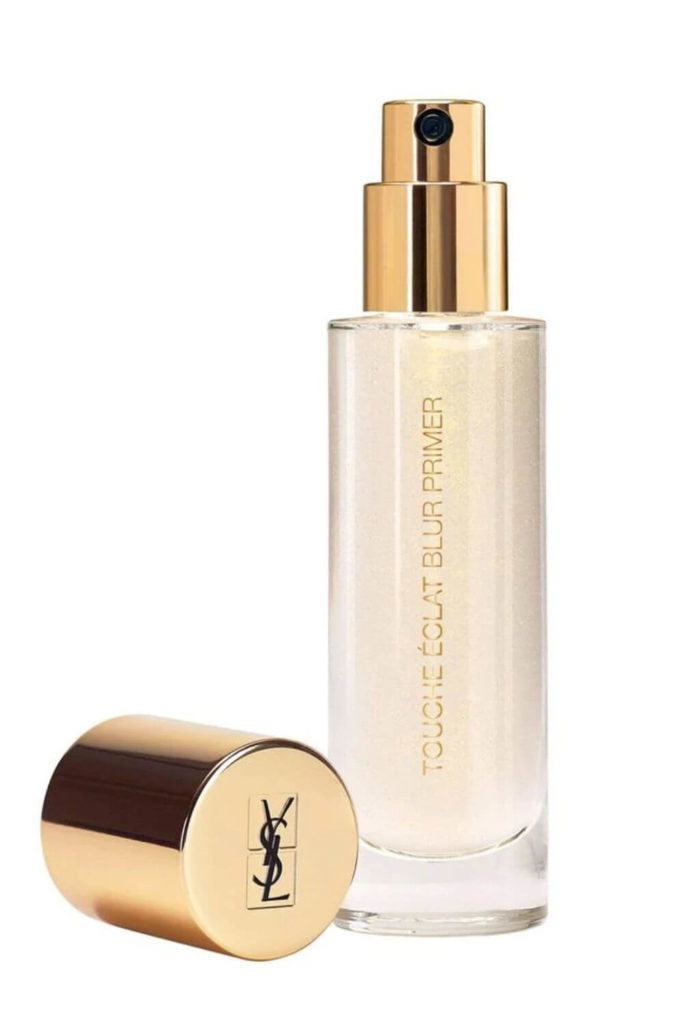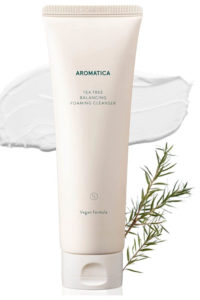Primer or Moisturizer: Which Comes First?
Primer vs Moisturizer
With so many skin care products on the market in 2023, it can be difficult to determine which types of products are right for your skin. Both primers and moisturizers can benefit your beauty routine, and choosing the right products can make all the difference in your skincare routine.
What is a Primer?
A makeup primer is a cosmetic product that is applied to the skin before applying makeup products such as foundation. Makeup primers provide an even base for makeup application that often reduces the appearance of pores and smooths the skin for a look of flawless complexion.
This post may contain affiliate links, which means I will receive a commission (at no additional cost to you) if you make a purchase. You can learn more about my privacy policy here. Thank you for your support!
Think of your face as a canvas. Makeup is the paint that is applied onto the canvas. When you have a smooth canvas, makeup will go on easier and stay on longer. Primers are what help create the perfect canvas, since they enhance the look of skin and give the skin a smooth surface. A face primer can enhance the appearance of foundations, tinted moisturizers and other makeup products.
Yves Saint Laurent Touche Éclat Blur Primer
Types of Primers and Their Benefits
There are many different kinds of primers, and different products have unique benefits that are geared towards different facial features and skin types.
If you are looking for a product to help increase the lifespan of your lip color and enhance the color of your lipstick or lipgloss, a lip primer can be applied directly before applying lip color.
Lip primers provide a smooth base for the lip color. Lip primers with added moisturizer ingredients can also help lock in moisture and keep your lips protected from the drying effects of lipstick.
Recommended Read: The 16 Best Moisturizers For Black Skin (In 2023)
If you are going out, an eye primer can help you keep your eyeshadow in place all day or all night. Eye primers help eye makeup stick onto the eyelids for longer. Eye primer is a slightly tacky substance, and this material smooths the surface of the eyelid, allowing eyeshadow to be worn for longer with less creasing or smudging. If you want the best results for your eye makeup, try using eye primer before applying eye makeup.
Blurring primers are the go-to primers for skin that has large pores or fine lines. Blurring primers use ingredients that help smooth out skin texture and give your skin a flawless complexion.
These primers can be used alone or can be applied to clean skin before applying foundation or tinted moisturizer.
Silicone-based primers are formulated with silicone. Silicone-based primers act as a barrier between the face and the makeup. Silicone is great at smoothing the skin’s surface, making makeup last longer, and reducing the look of wrinkles, pores and fine lines.
Choosing The Right Primer For Your Skin
A matte primer is a good choice if you tend to have oily skin. Try applying a matte primer directly before applying foundation for a matte-fied, photoshopped-look. A mattifying primer soaks up oils and reduces skin shine.
If you struggle with facial redness or hyperpigmentation, a color-correcting primer could make a huge difference. A color-correcting primer has pigment built into the formula to help cancel out unwanted tones such as redness.
Try a green primer to cancel out redness, or a purple primer to cancel out yellow tones. This type of primer is a good primer for when you want to reduce redness or yellow tones without piling on too many products. You can even wear a color-correcting primer alone, without foundation, for that glowy, no-makeup look.
TOUCH IN SOL Redness Correcting Base Primer
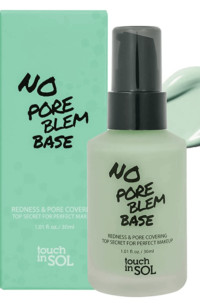
Tatcha Liquid Silk Canvas Face Primer

If you are prone to dry skin or dry patches, it might be worthwhile to consider using a hydrating primer, also known as a moisturizing primer.
Hydrating primers should not replace your go-to moisturizer, however they can be applied after moisturizer to help lock in moisture before applying makeup. Hydrating primers help the facial skin look and feel softer, improving the way makeup glides onto the skin, while reducing the look of dry, dull complexion.
Elizabeth Mott Thank Me Later Face Primer
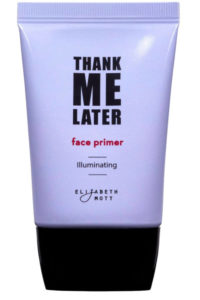
Although silicone-based primers are the best at giving you that flawless, photoshopped look, you’ll want to avoid this silicone-based skincare product if you are prone to acne breakouts. Silicone is said to be bad for breakouts because the silicone material creates a seal that locks in acne-causing bacteria and oils on the skin’s surface.
As an alternative to silicone-based primers, you can try using facial oil as an oil-based primer. Facial oils are great at hydrating the skin and smoothing the skin’s surface. Apply before makeup to give your skin an illuminated glow. This may not be the best option for you if you tend to have oily skin, as makeup may trap the oils in your pores, leading to acne breakouts.
If you have oily skin or combination skin, one fun DIY option is natural primers. You can combine simple ingredients such as aloe vera and witch hazel to create your very own natural primer.
Regardless of which primer you choose to add to your makeup routine, it is important to identify the individual needs of your skin, instead of going for the new primer on the shelf. Try booking an appointment with a dermatologist to learn more about your skin type, even if you think you have healthy skin!
What’s the Difference Between Primer and a Moisturizer?

Primer forms a barrier between your skin and your makeup application. It also helps makeup lasts longer. This lightweight primer is perfect for sensitive skin. Moisturizers hydrate and nourish the skin and primarily focus on improving your skin’s health and hydration. This moisturizer is my go to, and I highly recommend it if you have sensitive skin.
What is a Moisturizer?
The short answer is that a moisturizer is a substance that helps hydrate the skin and lock in moisture. Moisturizers use hydrating ingredients like hyaluronic acid, vitamin E, and shea butter to improve the texture of dry areas and increase softness of the skin. Moisturizers can also help prevent premature wrinkles and can be used as an anti-aging agent.
There are many types of face moisturizers to choose from. Try adding a moisturizer with built-in sun protection to your daily skincare routine, so that it is harder to forget to protect your skin from harmful UV rays.
Organic Rosehip Oil
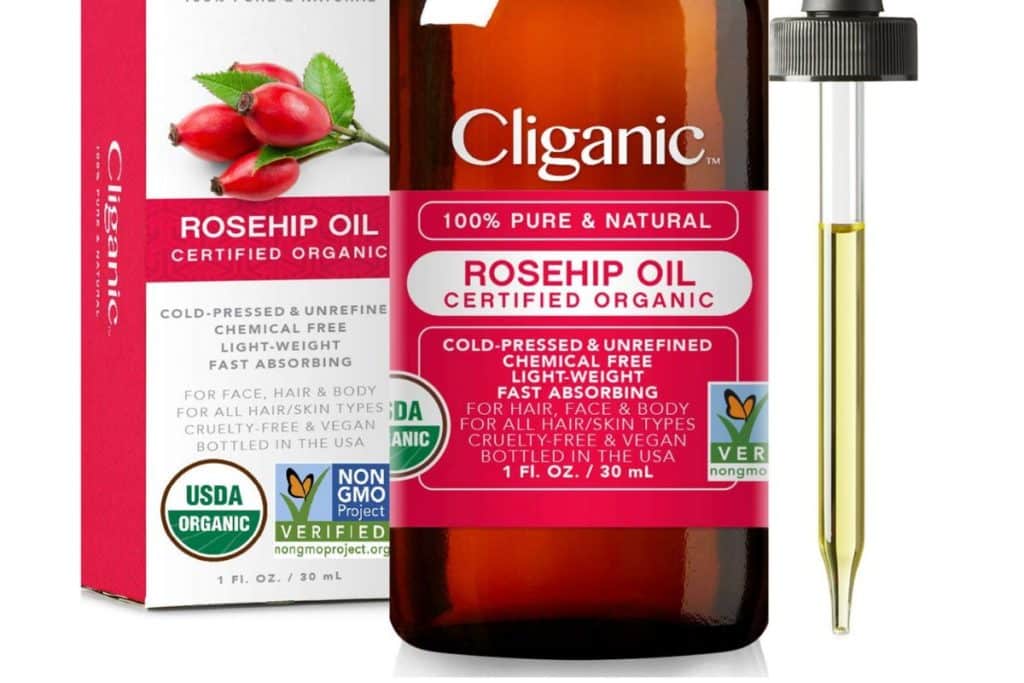
Choosing The Right Moisturizer For Your Skin
It is important to choose a moisturizer that fits the individual needs of your skin concerns. Different moisturizers can help with various skincare concerns.
If you are prone to oily skin, you might want to go for a moisturizer with a lightweight texture, so as not to overwhelm the delicate balance of your skin. It may seem counterintuitive, but face moisturizers are an important step when balancing oily skin. According to skincare experts, the skin can produce excess oil when it is dehydrated. Remember to hydrate your skin both inside and out by drinking plenty of water daily.
Recommended Read: 18 Best Vegan Facial Cleansers (2023)
If you have sensitive skin, using a moisturizer that is fragrance free is recommended. Brands like CeraVe and Aveeno have some of the best options for sensitive skin.
CeraVe Moisturizing Facial Lotion
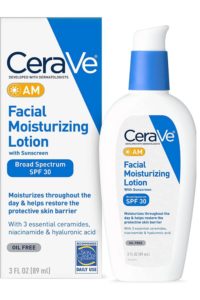
Aveeno Positively Radiant
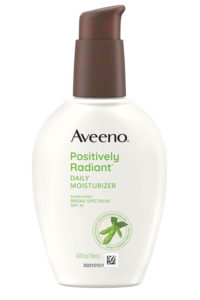
If you face dark circles, dark spots or uneven skin tones from acne scars or sun damage, a good moisturizer to try is one that contains vitamin C. Vitamin C is an ingredient that helps reduce uneven skin tones and minimize dark spots.
If you have dry skin, choose a heavier, more rich moisturizer that contains hyaluronic acid, aloe, glycerin, mineral oil or other types of oils. According to a skin care guide by Kiehl’s, a trusted skincare brand, there are certain ingredients that are especially good at giving your skin that extra boost of hydration.
Differences Between Primers and Moisturizers
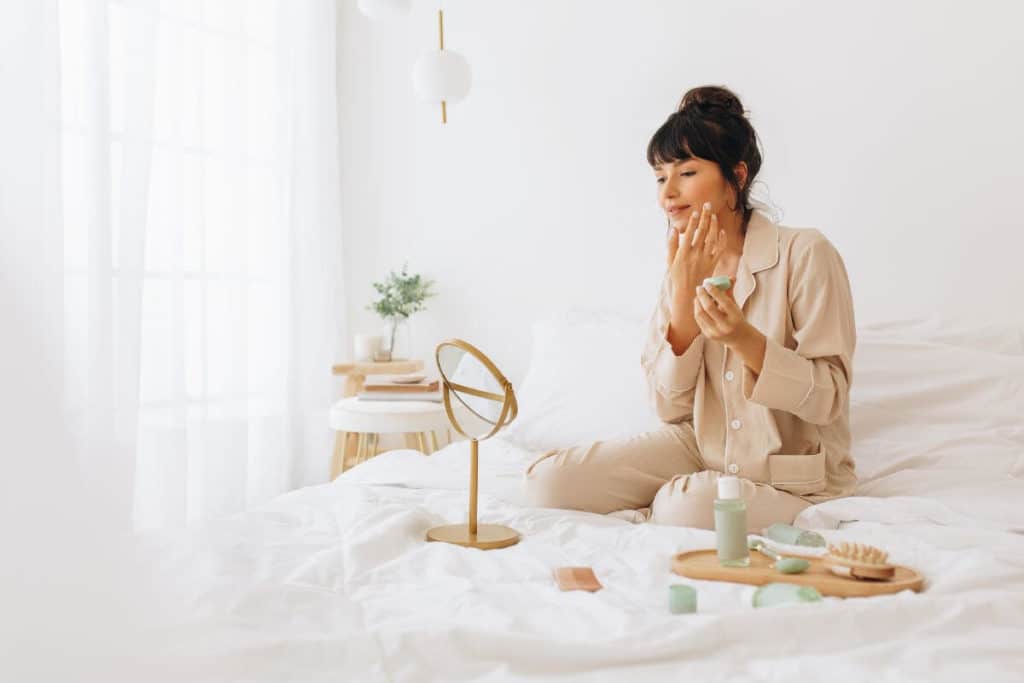
Some primers can have moisturizing ingredients and some moisturizers can have priming ingredients. This can become confusing, so to simplify things, the main difference between primers and moisturizers is that moisturizers are created primarily to hydrate the skin, while primers are created primarily to prep the skin for flawless makeup application.
These two products serve different purposes, and even if your primer contains moisturizing properties, it is important to consider using a separate moisturizer that does not contain primer ingredients for bedtime use or for use without makeup.
Sometimes the chemicals in primers can be more harsh on the skin than stand-alone moisturizers. In order to achieve healthy, smooth skin, you need to give your skin a break from makeup products such as primers and foundations.
How to Use a Moisturizer?
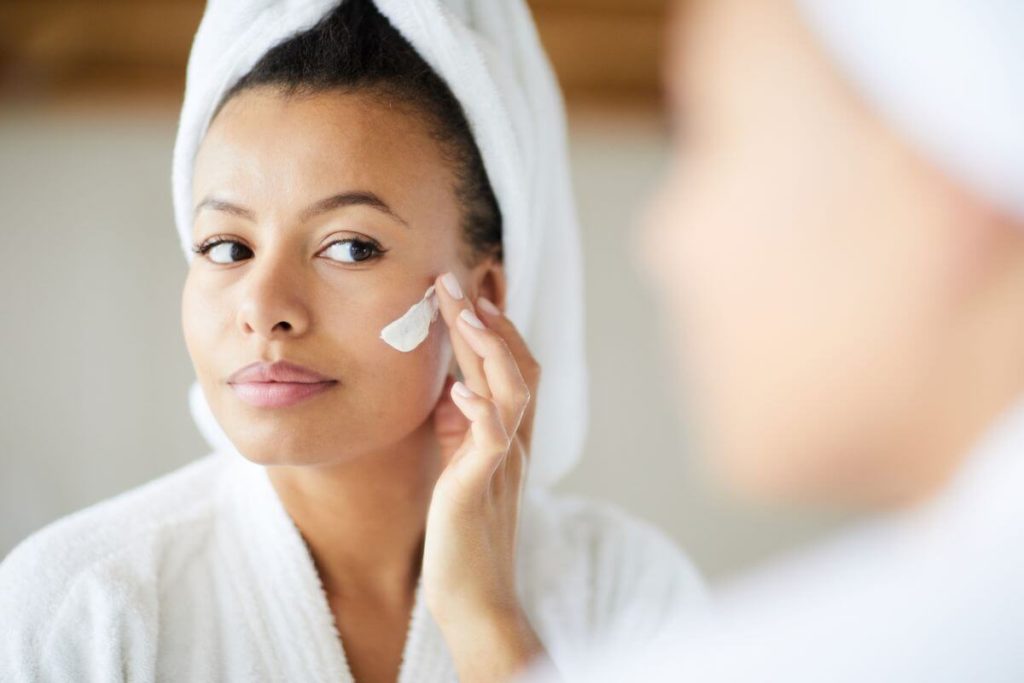
It is important to complete your skincare routine in the right order, to ensure the products’ best results. The first step in your skincare routine should always be cleansing.
Cleansing helps regulate oil production and wash away dead skin cells that build up on the skin’s surface. Regular cleansing can help reduce acne and improve skin texture. Always cleanse and apply moisturizer before applying your primer and makeup.
Aromatica Balancing Facial Cleanser
When you are done cleansing and gently patting your face dry (never rub!), scoop up a grape-sized amount of moisturizer and massage onto bare skin using clean fingertips.
Moisturizing is one of the most important steps to your skincare routine. If you are overwhelmed with all the possible skincare products out there, try to start simple. Incorporate only two easy steps into your daily routine: applying gentle cleanser and a fragrance-free moisturizer every day.
How to Use a Primer?
Primer application should be the last step of your skincare routine before applying makeup. Primer application is an extra step that will help your makeup go the extra mile on a night out or a long work day.
If your primer comes in a tube, the best way to apply it to your skin is to open the cap and press the pump down, dispensing a pea-sized amount of primer to the back of your hand. Using a beauty blender or your fingertips, gently pat the substance onto your face to create an ideal canvas, making sure to cover the T-zone.
At the end of the day or night, always remember to use a gentle cleanser to remove all makeup and primers from your face. Whatever you do, try not to fall asleep with a full face of makeup! Removal of makeup is an easy way to avoid pesky breakouts from occurring.
Should You Apply Primer Before or After Tinted Moisturizer?
When using a tinted moisturizer, it is generally recommended to apply primer before your tinted moisturizer to create a smooth base for your makeup. It will also help your makeup last longer. However, some tinted moisturizers have primer properties in the ingredients, and is this case, a primer wouldn’t be necessary.
Primer or Serum First?
When prepping your face for makeup, a serum should be used first, followed by the primer. The reason behind this method is that the serum provides moisture to the skin and hydrates it, preparing it for makeup application. Once the skin is properly hydrated, the primer can then be applied to create a smooth base for your makeup.
In summary, the recommended process for prepping your skin for makeup application is as follows:
- Cleanse
- Tone
- Apply Serum
- Apply Moisturizer
- Apply Primer
- Apply Foundation
Hydrating Primer vs. Moisturizer
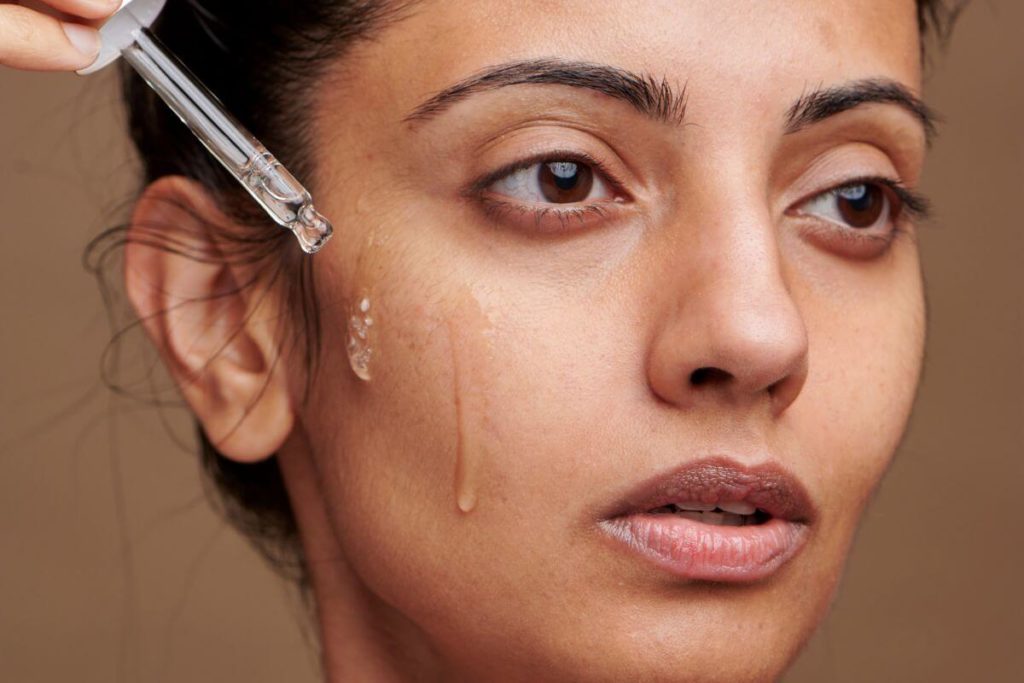
When it comes to prepping your skin for makeup application, two products that are often confused are hydrating primers and moisturizers.
While both products serve the purpose of hydrating the skin, they are designed to work in different ways and can be used separately or together, depending on your skin type and makeup goals.
A moisturizer is a skincare product that is designed to hydrate the skin and create a barrier to prevent moisture loss. It is typically applied after cleansing and toning the skin, and before any other skincare or makeup products.

Moisturizers come in various formulations, from lightweight lotions to heavy creams, and can contain different ingredients, such as humectants, emollients, and occlusives, to target different skin concerns.
A hydrating primer, on the other hand, is a cosmetic product that is applied after skincare and before makeup to create a smooth and even surface on the skin.
Its primary function is to hydrate and plump the skin, allowing makeup to adhere better and last longer. Hydrating primers are typically lightweight, water-based formulas that contain humectants and other hydrating ingredients, such as hyaluronic acid or glycerin.
So, which one should you use, a hydrating primer or a moisturizer? The answer depends on your skin type and makeup goals.
If you have dry or dehydrated skin, using both a moisturizer and a hydrating primer can help to ensure your skin stays hydrated throughout the day. Apply the moisturizer first to create a barrier and lock in moisture, then follow with the hydrating primer to add an extra layer of hydration and prepare the skin for makeup application.
If you have oily or combination skin, using a hydrating primer alone may be sufficient to provide the necessary hydration without making your skin feel greasy or heavy. However, if you find that your skin still feels dry or tight after using a hydrating primer, you can layer a lightweight moisturizer on top.
In summary, while both hydrating primers and moisturizers serve the purpose of hydrating the skin, they work in different ways and can be used separately or together, depending on your skin type and makeup goals. Experiment with different products and layering techniques to find what works best for you.
Final Thoughts
It’s important to remember that everyone’s skin is unique, and what works for one person may not work for another. Experimenting with different products and application techniques can help you find what works best for your skin type and makeup goals.
In summary, applying a moisturizer first, followed by a primer, is the most common and recommended order for achieving a flawless and long-lasting makeup look. However, it’s important to listen to your skin and adjust your routine as needed to achieve the best results.


